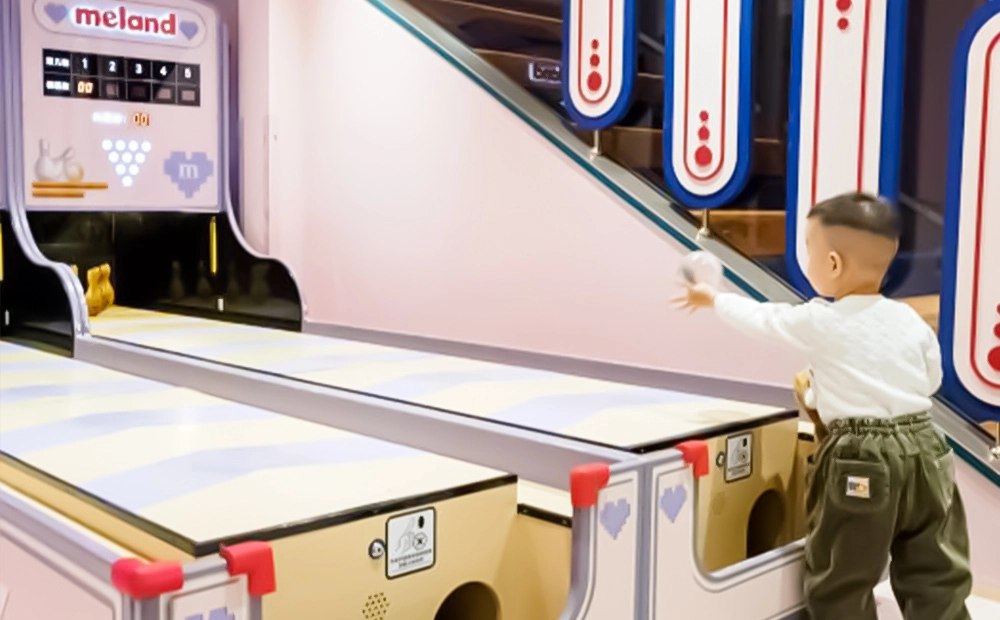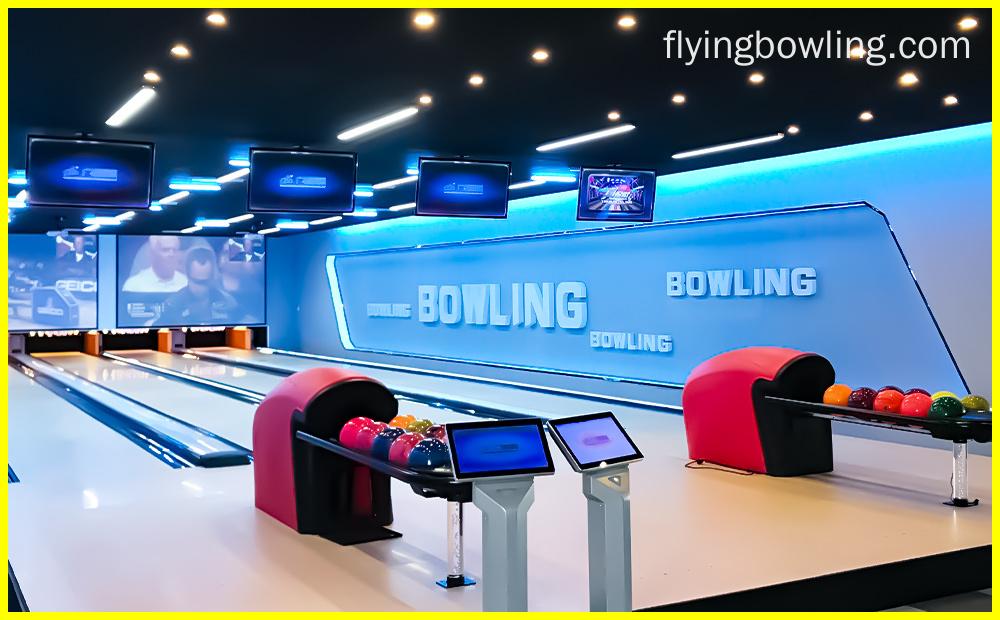Flying Bowling: The Expert's Guide to Bowling Center Construction
Looking to construct a state-of-the-art bowling center for your business? Learn everything you need to know from the experts at Flying Bowling. From the initial planning stages to the finishing touches, we've got you covered with essential tips and insights for a successful project.
1. Understanding the Basics of Bowling Center Construction
In this section, we'll provide an overview of the essential elements involved in building a bowling center. From layout and design considerations to the equipment and technology required, we'll outline the foundational aspects that every project should address.
2. Key Factors to Consider in the Planning Stage
When it comes to planning a bowling center construction project, attention to detail is critical. We'll delve into key considerations such as site selection, zoning regulations, and permits, as well as the importance of conducting thorough market research and feasibility studies.
3. Designing a Functional and Attractive Bowling Center
The success of a bowling center often hinges on its overall design. We'll explore the design elements that contribute to a functional and visually appealing space, from the layout of the bowling lanes to the inclusion of entertainment zones and food and beverage facilities.
4. Choosing the Right Construction Materials and Equipment
Selecting high-quality materials and equipment is vital for the durability and performance of a bowling center. We'll discuss the types of materials best suited for construction, as well as the essential equipment needed for lane installation, scoring systems, and safety features.
5. Addressing Construction Challenges and Solutions
Construction projects can present various challenges, and building a bowling center is no exception. We'll highlight common obstacles encountered during construction and offer practical solutions to overcome these issues, ensuring a smooth and efficient building process.
6. Incorporating Brand Identity and Marketing Strategies
Establishing a strong brand identity and marketing presence is crucial for the success of a bowling center. We'll provide insights into branding strategies and marketing tactics that can attract and retain customers, as well as maximize the center's revenue-generating potential.
7. Safety and Compliance Standards in Bowling Center Construction
Safety is paramount in any commercial construction project, and bowling centers are no exception. We'll outline the necessary safety and compliance standards that must be adhered to during construction, ensuring the well-being of patrons and staff alike.
8. Sustainable Practices in Bowling Center Construction
In today's environmentally conscious climate, sustainable construction practices are increasingly important. We'll explore sustainable design and construction options that can minimize environmental impact, reduce operating costs, and enhance the overall appeal of a bowling center.
Conclusion:
Constructing a successful bowling center requires careful planning, attention to detail, and a comprehensive understanding of the various elements involved. By following the expert insights and tips provided by Flying Bowling, you can embark on your construction project with confidence, knowing you have the knowledge and guidance necessary for creating a first-rate bowling center.
FAQs
Q1: What are the essential factors to consider when choosing a location for a bowling center?
A1: When selecting a location, factors such as visibility, accessibility, surrounding demographics, and the competitive landscape should be carefully evaluated to determine the viability of the site.
Q2: What materials are typically used in the construction of bowling lanes?
A2: Bowling lanes are commonly constructed of a combination of synthetic materials, including high-density fiberboard and urethane coatings, known for their durability and smooth playing surface.
Q3: What are the safety regulations that govern the construction of a bowling center?
A3: Safety regulations include guidelines for structural integrity, fire safety, accessibility, and the installation of safety features such as guardrails, emergency exits, and proper lighting.
Q4: How can sustainable practices be integrated into the construction of a bowling center?
A4: Sustainable practices can be incorporated through the use of energy-efficient lighting, water-saving fixtures, recycled building materials, and sustainable landscaping to minimize environmental impact.
Q5: What are some effective branding and marketing strategies for promoting a new bowling center?
A5: Effective branding and marketing strategies include creating a unique brand identity, leveraging social media and digital marketing channels, offering promotions and events, and establishing partnerships within the local community to drive awareness and engagement.

The Ultimate Guide to Bowling Tools for Marketing Success
How Much to Build a Bowling Alley in Congo? | Flying
How Much Does a Bowling Alley Cost in the UK? | Flying
How Much to Build a Bowling Alley in Liechtenstein? | Flying
Bowling Equipment
Who buys used bowling equipment?
Usually, many of our Indian customers buy second-hand equipment because the price is relatively low. But in the end, they learned that Flying's prices were extremely competitive and the equipment was brand new and of very high quality. So finally, they chose to cooperate with Flying to purchase bowling equipment.
What basic equipment is needed for bowling?
Bowling needs lots of equipment, but the most important parts are the fairway boards and the string pinsetter equipment.
Product
How a bowling ball return machine works?
A bowling ball return system uses a combination of gravity, belts, and sometimes lifts to bring your ball back to you after your roll. Here's a breakdown of the typical process:
-
Ball Exit: After rolling down the lane, the ball exits into a channel at the end. This channel might have a slight incline to help guide the ball towards the return mechanism.
-
Transfer Tray: The ball rolls into a shallow tray or trough. This tray might have a diverter at the end to ensure balls from adjacent lanes don't collide.
-
Elevator or Incline (optional): In some setups, the ball might be lifted to a higher level before entering the return system. This creates a steeper decline for the ball to travel down, helping it gain momentum.
-
Belt Conveyor: The ball reaches a conveyor belt with a textured surface to prevent slipping. This belt carries the ball up an incline.
-
Gravity Channel: Once at the top of the incline, the ball is released onto a long, U-shaped channel. Gravity takes over, pulling the ball down through the channel.
-
Ball Deflector: At the end of the channel, there might be a deflector that diverts the ball slightly towards your lane. This ensures the ball ends up in the correct return slot.
-
Ball Return Tray: The ball finally reaches a tray or cradle positioned in front of your lane, ready for your next roll.
Here are some additional points to note:
- Modern systems might have sensors to detect the presence of a ball and activate the return mechanism accordingly.
- Some higher-end systems use quieter materials and designs to minimize noise during ball return.
Price
Cost to setup a 8 lane bowling business?
This includes bowling lanes, bowling balls, pins, scoring systems, ball return systems, shoes, and other necessary equipment. Purchasing or leasing high-quality equipment is essential for a successful operation.
The total cost can vary greatly depending on factors such as location, size, quality, and additional amenities (such as a restaurant or arcade). On average, setting up an 8-lane bowling business can cost anywhere from several hundred thousand to over a million dollars. It's essential to conduct thorough research and create a detailed business plan to accurately estimate the specific costs of your venture.
Consulting with Flying Bowling experts can provide valuable insights into potential expenses.
How much does it cost to build a 2 lane home bowling alley?
Building a 2-lane bowling alley in your home can be a fun and luxurious addition, but it comes with a significant cost. Here's a breakdown of what to expect:
Price range: Expect a ballpark figure of $120,000 to $195,000 [US dollars] for two lanes of traditional ten-pin bowling. This includes lane equipment, installation, and basic functionality for a home setting.
Variations: This cost can be highly influenced by your desired features and customizations. Here are some factors that can push the price higher:
Upgraded equipment: Automatic scoring systems, lane lighting systems, or high-performance lane surfaces will all add to the cost.
Construction considerations: The cost of preparing the space in your home might vary depending on the existing structures, plumbing, and electrical work needed.

Flying Ultra Standard Bowling String Pinsetter

Flying Smart Duckpin Bowling
Flying Smart Duckpin Bowling (FSDB) innovative design, standard 9.2-meter short lane, can be shortened in length, compact layout suitable for small spaces. The game rules are simple but challenging, attracting players of different ages to actively participate.
Suitable for social entertainment venues such as bars, billiard halls, and game centers, it not only enhances interactivity, but also increases the popularity and consumption frequency of the venue. The fun and competitive nature of FSDB will make it a new focus of social activities.

Brand New String Pinsetter Mini Bowling Equipment Small Ball And Pin
Flying Cute Mini Bowling (FCMB) is a mini bowling experience designed for children and families. The lane length is fixed at 12 meters, equipped with lightweight balls without finger holes (only 1.25kg) and small pins, specially designed for children and family fun.
It can not only help children feel the fun of bowling, but also stimulate their interest and competitive consciousness. Suitable for children's playgrounds, theme parks and parent-child centers, it is the best choice for places focusing on the children's market.

Indoor Medium Duckpin Bowling Lane Equipment For Bowling Alley
Flying Social Medium Bowling (FSMB) is tailored for small venues, with flexible lane lengths (customizable from 9.6 meters to 18 meters), a small ball design suitable for players of all ages, and light pins that are easier to knock down, increasing participation and fun.
Whether it is a gathering of friends or a casual social, FSMB can easily create a relaxed and pleasant atmosphere. Its efficient space-utilization design is particularly suitable for cafes, bars and community entertainment venues, allowing people to fall in love with bowling in a relaxed interaction.
Contact Flying
Start your custom bowling alley project
If you contact us now for more details, we can provide you with a custom bowling alley service. Our service team will get back to you within 24 hours normally!
© 2024 Flying BOWLING. Designed by gooeyun


